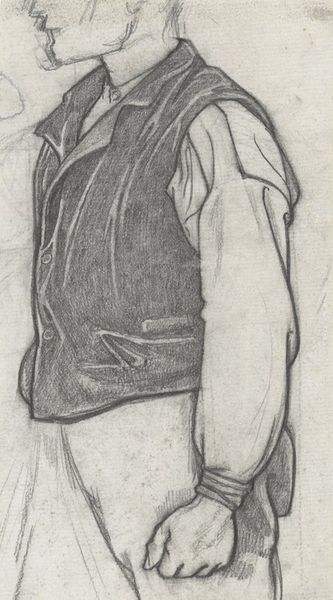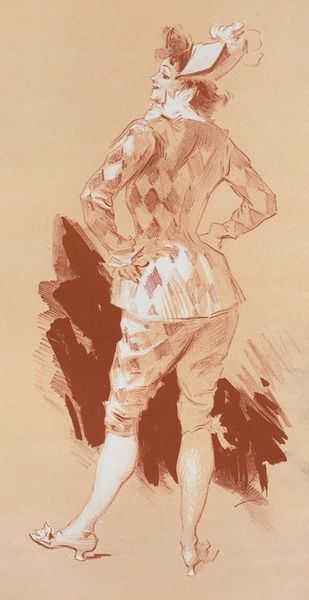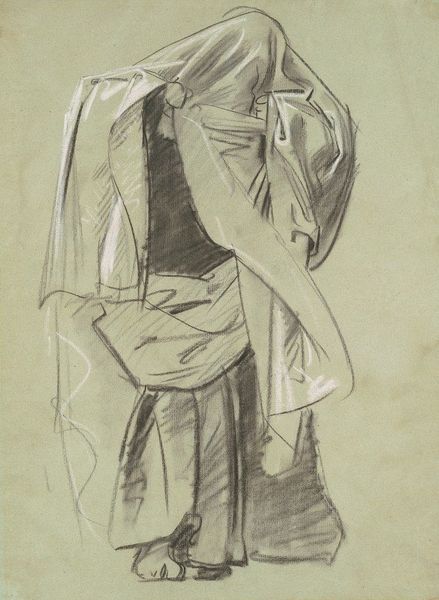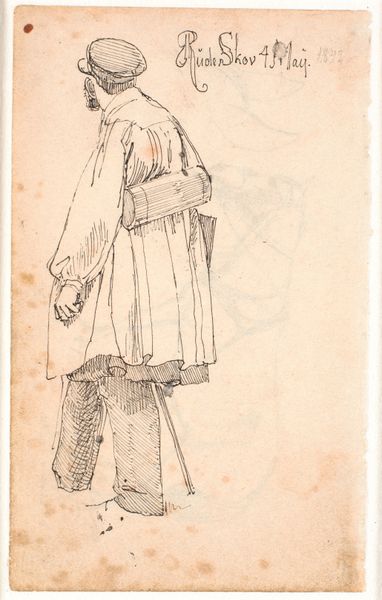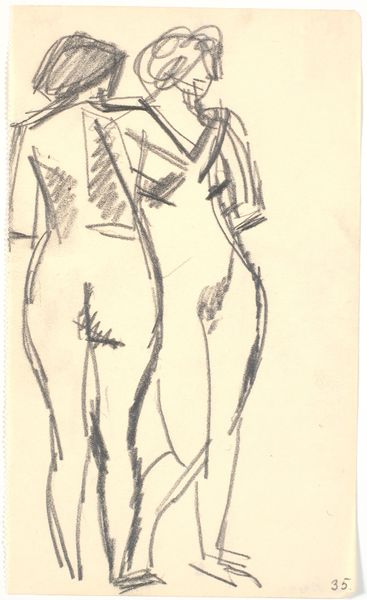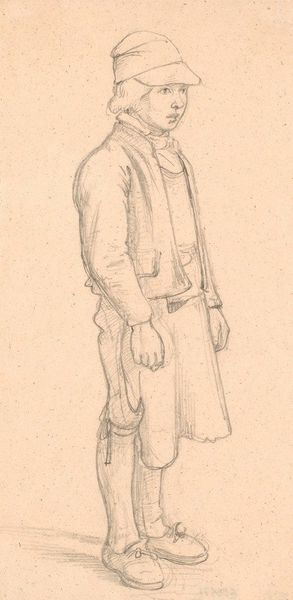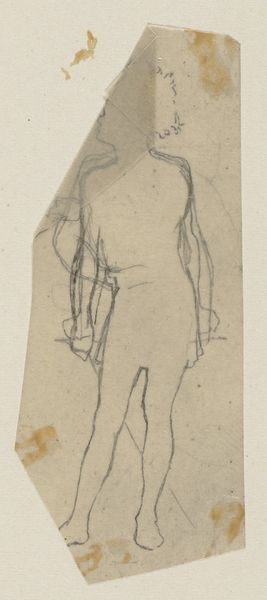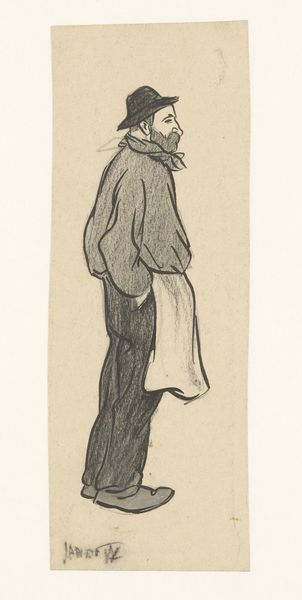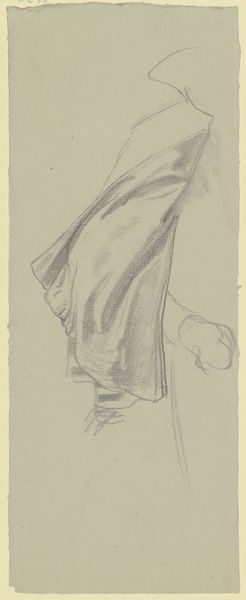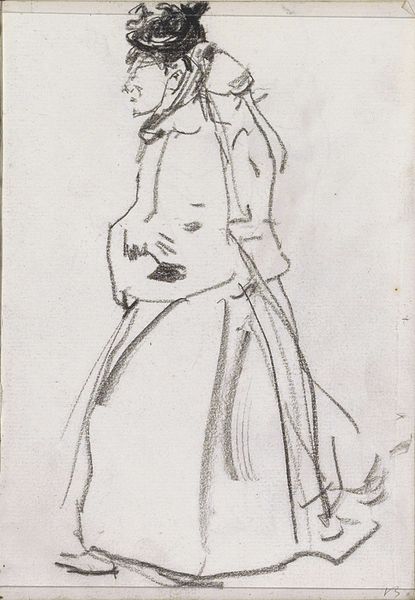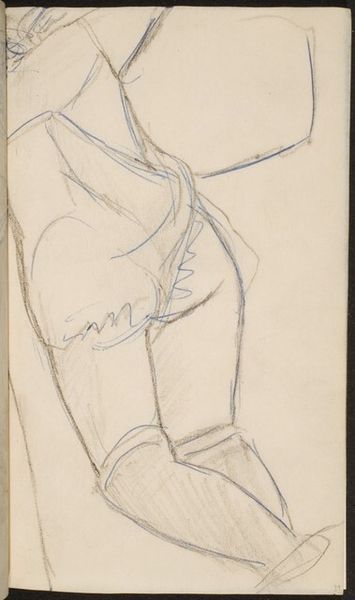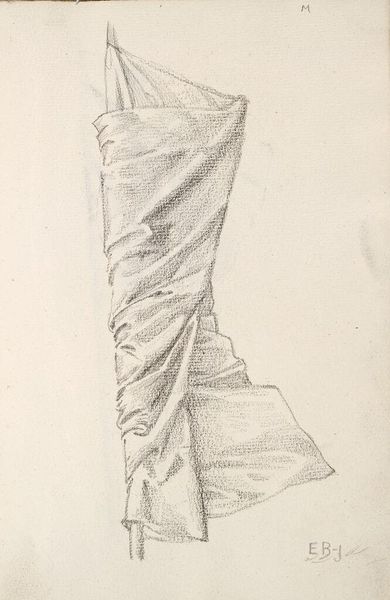
drawing, pencil
#
portrait
#
drawing
#
pencil sketch
#
figuration
#
pencil
#
line
#
academic-art
#
realism
Copyright: Public Domain: Artvee
Editor: So, here we have "Standing Man," a pencil drawing created in 1899 by Richard Nicolaüs Roland Holst. I find it captivating how unfinished it feels, yet it manages to convey a sense of the subject's character. What do you make of it? Curator: Well, the unfinished quality you perceive is interesting in itself. Consider the socio-political context of the late 19th century: The rise of industrialization spurred anxieties about labor and the individual's role within society. Holst, involved in socialist circles, likely saw art as a tool for social commentary. Could this sketch be interpreted not just as a study, but as a statement on the incomplete or evolving identity of the working class? What do you think about the man's clothing, and what might that represent? Editor: I hadn't considered that. I was mainly looking at the composition and style, but I see your point about it being a cultural commentary! The clothes appear practical and durable, like someone working outdoors, a worker of sorts? Is this a "hero of the proletariat" that was common at the time? Curator: Precisely! Holst's engagement with socialist ideology is significant here. Notice also the academic style which evokes both tradition and accessibility; This was at a time when artists aimed to depict reality. It's crucial to remember that museums and galleries then had very different notions of “high” and "low" art. Holst aimed for something more populist in reach. Considering his context, do you find anything challenging about the museum’s decision to display what appears to be an unfinished piece, considering those high/low distinctions of the era? Editor: That’s a very valid observation; back then the purpose was radically different than it is today. It sheds new light into what it represented. Thanks for the background! Curator: Indeed. It's about understanding how cultural institutions both shape and reflect society’s values. Thanks for prompting this valuable discussion, and bringing my focus to that aspect!
Comments
No comments
Be the first to comment and join the conversation on the ultimate creative platform.
